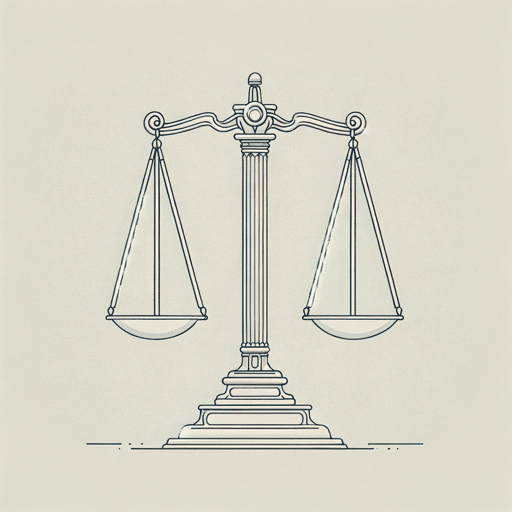58 pages • 1 hour read
Jeffrey ToobinThe Nine: Inside the Secret World of the Supreme Court
Nonfiction | Book | Adult | Published in 2007A modern alternative to SparkNotes and CliffsNotes, SuperSummary offers high-quality Study Guides with detailed chapter summaries and analysis of major themes, characters, and more.
Summary and Study Guide
Overview
In The Nine: Inside the Secret World of the Supreme Court, author Jeffrey Toobin begins the Prologue near the end of the story with the funeral of Chief Justice William Rehnquist in 2005. This is a nonfiction book about the transformation of the Supreme Court from liberal to conservative over a period of roughly 35 years, and the transformation was complete upon the death of Rehnquist. Toobin, an American lawyer and legal analyst, published The Nine in 2007.
After that, the book follows a chronological order starting with the presidency of Ronald Reagan. Part 1 covers the administrations of Reagan, George H. W. Bush, and Bill Clinton. Reagan ushered in a new era of conservatism when he became president in 1980. The Supreme Court was still firmly liberal overall at that point, nearing the end of the Warren Burger Court. Law schools were also seen as bastions of liberal thought, but there began to be some pushback against this. Some law students founded what would become the Federalist Society, an organization devoted to fostering conservative principles in the legal system.
Reagan appointed three justices, Sandra Day O’Connor, Antonin Scalia, and Anthony Kennedy, while Bush appointed two, David Souter and Clarence Thomas. In theory, they should have all been conservative, but only Scalia and Thomas turned out to be consistently so. Along with William Rehnquist, whom Reagan made chief justice upon the retirement of Burger, they formed the conservative votes that began reshaping the decisions of the Court. Clinton selected two justices to the Court, Ruth Bader Ginsburg and Stephen Breyer, two consistently liberal voices on the bench. Already on the Court was John Paul Stevens, who had been chosen by Gerald Ford. The 11 years they served together, from 1994 to 2005, was the longest period in the history of the nine-member Court with the same members.
The conservative movement in the 1980s began to have some successes in the 1990s. Their main target, Roe v. Wade, which had legalized abortion, came close to being overturned in 1992, in the case of Casey. Only a last-minute coalition of Souter, O’Connor, and Kennedy protected Roe. The conservatives had more success in the area of religion. In general, they wanted to allow more religion in public life. A series of cases was argued on the grounds of free speech rather than the Free Exercise Clause, and the Court allowed more things such as public displays of religion and student religious groups meeting on school grounds. However, at the end of the 1990s, the conservative movement lost some momentum. In another abortion case, Stenberg, the Court struck down a law restricting abortion because there was no exception for the health of the mother, something O’Connor felt strongly about.
Part 2 of the book outlines the Court’s involvement in the presidential election of 2000. When the race in Florida—which would decide the election—was too close to call, it got bogged down in legal challenges. The Supreme Court ended up intervening and, in effect, deciding the election in favor of George W. Bush, who became president. It was an unusual move by the Court, one without precedent as well as one that set no precedent and dealt with no general principle. What made it so controversial, Toobin writes, is that the decision was expressly limited to choosing the winner of that one election.
After 2000, the Court moved leftward for several years. This is the focus of Part 3. In large part, this was due to Kennedy’s exposure to international law from his travels to Europe. He and O’Connor often acted as the swing vote in cases, and references to international legal norms began creeping into his opinions. This happened in Lawrence v. Texas, a case that struck down a state prohibition on gay sex, and in Roper v. Simmons, which involved the death penalty for minors. Another factor in the Court’s move left was that Chief Justice Rehnquist started growing weary of the job and did not put as much energy as he once did into fighting for conservative issues.
The fourth and final part of the book covers the resurgence of the conservative movement after 2005. That year, O’Connor resigned and Rehnquist died, giving Bush the opportunity to fill two seats with staunch conservatives, John Roberts (who became chief justice) and Samuel Alito. The change was clear and swift in the 2006-2007 term, as the Court moved back to the right on cases involving key issues. For example, in two school desegregation cases, the Court found that race could not be a factor in determining where students went to school, even when designed to help minority students. Moreover, an abortion case was decided that upheld restrictions to abortion in a federal law that was very similar to a state law the Court had earlier struck down.
Related Titles
By Jeffrey Toobin



